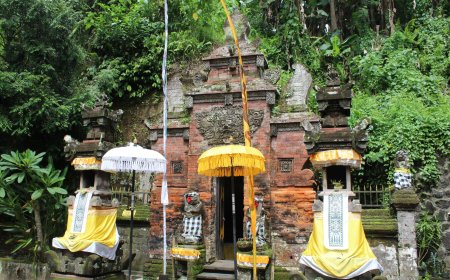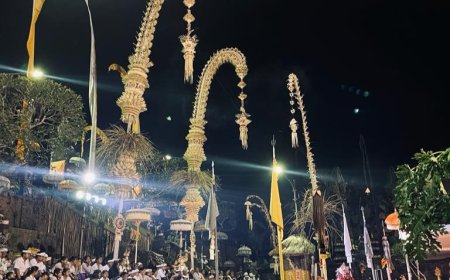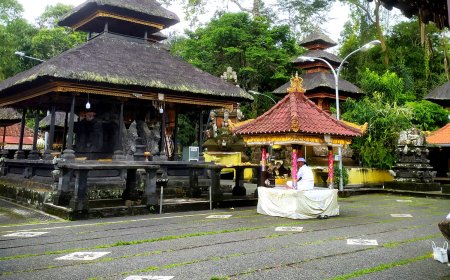Tantrayana Hindu Historical Relics at Kebo Edan Temple
The Island of the Gods is an island of a thousand temples. The existence of temples in Bali certainly does not escape the history stored in each temple. The history of temples on the island of Bali is not only from within the island of Bali, such as the Kebo Edan Temple which has a history closely related to the Singosari Kingdom, during the reign of King Kertanegara. This combination of history certainly leaves historical objects from both regions that are full of culture, beliefs, and as a silent witness to the historic events in the development of Hindu Tantrayana in Bali.
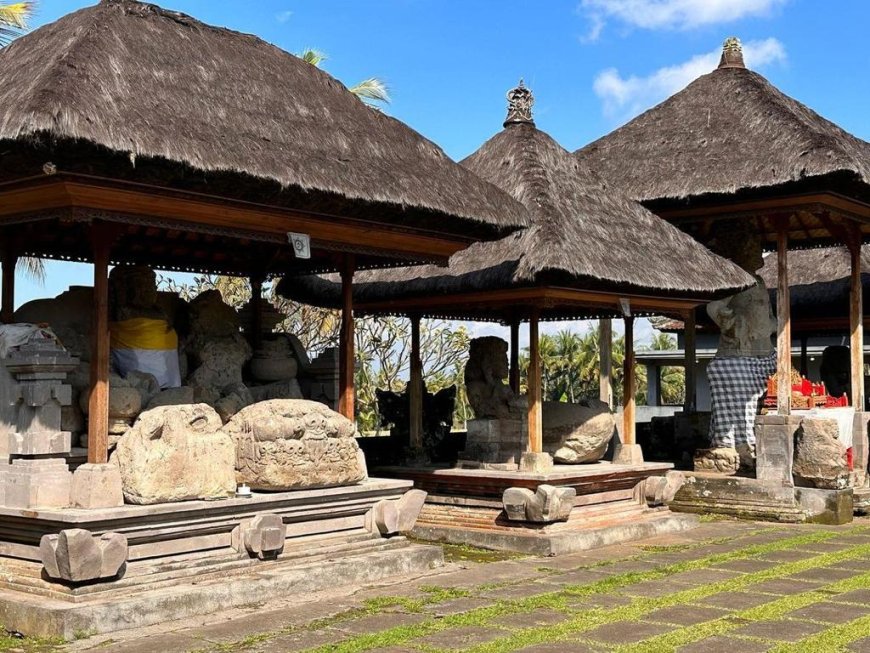
The Island of the Gods is where the majority of Hindus live and is known as the island of a thousand temples. Hindu shrines called temples serve to worship God Almighty. Bali is better known as an area that has a homogeneous society, but actually the people in Bali are not homogeneous but heterogeneous. This is characterized by the arrival of migrants from different backgrounds, ethnicities, cultures, religions.
The plurality of cultures on the Island of the Gods can be seen from the shrine with the construction of a pelinggih or the existence of an archaeological object with the concept of belief outside Hinduism in Bali which is stored in the shrine. Kebo Edan Temple located in Pejeng, Gianyar is one of the temples that has historical objects in the development of the Hindu Kingdom in Indonesia.
Kebo Edan Temple is a sacred place that has archaeological heritage with its own characteristics. The uniqueness of this temple is that it has a statue of Shiva Bhairawa, which means that in Bali at that time Tantrayana Hinduism developed.

Kebo Edan Temple Statue Shrine (Photo Source: Personal Collection)
During the Singosari Kingdom, King Kertanegara built Kebo Edan Temple. At that time King Kertanegara was well known for his foreign policy, where during his leadership period he always struggled to invade his power both westward to the Malay area in Sumatra and eastward including Bali. In historical records, it is said that in 1284 King Kertanegara attacked Bali, and the Kingdom of Bali lost with its King becoming a prisoner. It is mentioned in the Negarakertagama book that King Kertanegara sent envoys to defeat Bali.
King Kertanegara was a Tantrayana king who saw himself as a Bhairawa. The Bhairawa school consists of three kinds. The three schools are Bhairawa Kala Cakra, which is a combination of the teachings of Bhuda with the Tantrayana school. Then Bhairawa Heruka is a teaching that comes from the tradition of Indonesian beliefs mixed with the Kala Cakra school, this teaching is found in West Sumatra. The third is Bhairawa Bima Sakti located in Bali, this school is a mixture of Bhairawa teachings with Shiva teachings. But this teaching is said to have political tendencies, aiming to gain great charisma in leading the kingdom and maintaining the security of the Kingdom.
There are two inscriptions dated caka 1218 and 1222 that do not mention the name of the king but only the name "raja patih", i.e. Kebo Parud. Other names and mantra ranks are also Javanese, such as the ministers of the Singosari kingdom. As the king's patih, he issued an inscription, the first inscription of Patih Kebo Parud that discusses the problems of Kedisan village which is dated Caka 1218. In the inscription Kebo Parud is known as "Mwang Ida Raja Patih I mekakosir Kebo Parud". Based on the content of the inscription and the name of the patih, it turns out to be the designation of a state official from East Java. In the Singosari kingdom, the name of such a patih is often found as King Kertanegara's patih such as Patih Kebo Arema and Patih Kebo Tengah. This explains that Kebo Parud was assigned as Governor or envoy of Singosari Kingdom in Bali. Similar to Kertanegara, Kebo Parud also adhered to the Tantrayana sect, this is because in the inscriptions left by Kebo Parud there is no sapatha shown to Maharesi Agastya as often found in other inscriptions found in Bali that were issued first.
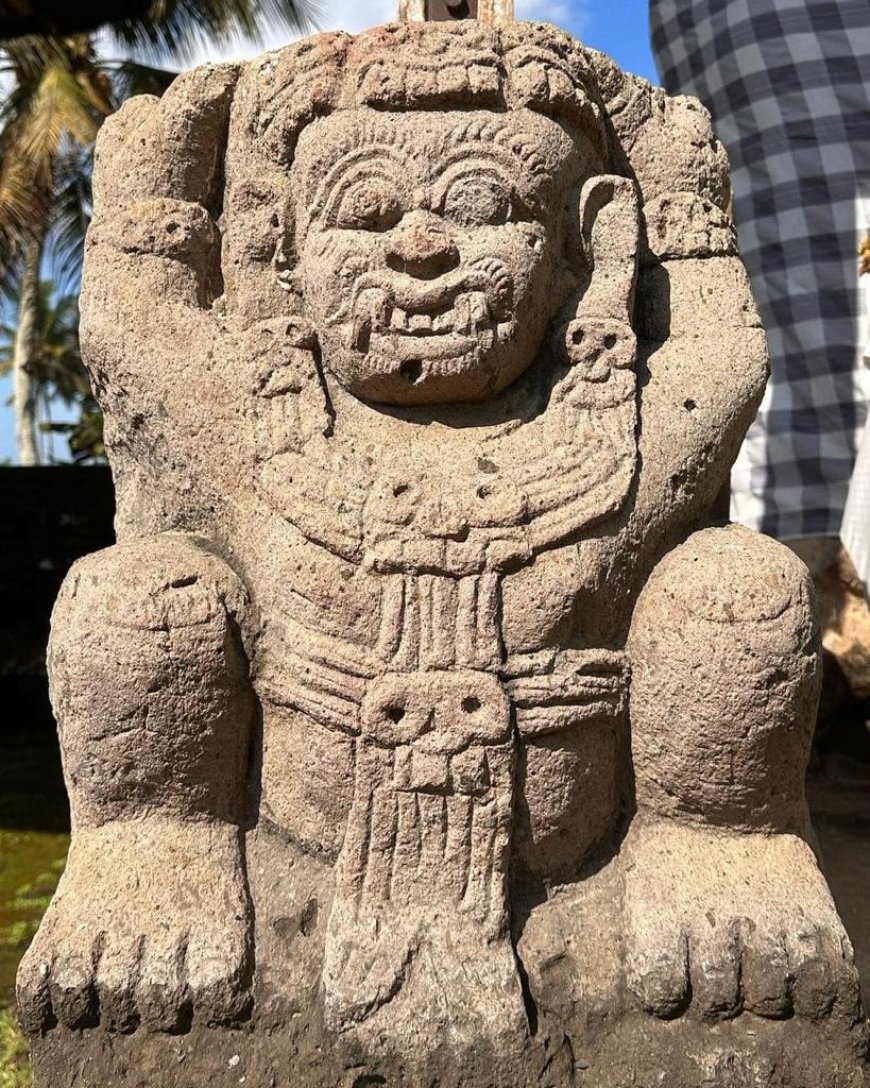
Statue of Kebo Edan Temple (Photo Source: Personal Collection)
Given the name Siwa Bhairawa by residents around Kebo Edan temple means that the statue is a statue made by adherents of the Tantrayana sect made for worship purposes. It can be seen from the shape and style of the statue of Shiva Bhairawa or the statues found in Kebo Edan Temple have similarities with other statues of Tantrayana, such as the Heruka statue in Biaro Bahal II Padang Lawas, Central Sumatra, the Bhairawa Buddha statue which is a depiction of King Adityawarman of the Malay Kingdom, Sumatra and the Bhairawa 6 statue from Singosari temple, East Java. These statues are relics of the Tantrayana teachings which were the teachings adopted by Kertanegara and then disseminated to the areas he controlled including Bali and Sumatra.
Based on records in the Negarakertagama book that the Singosari Kingdom defeated Bali in 1284 during the reign of Kertagama, and the inscriptions issued by Kebo Parud which are dated caka year 1218 and 1222. In addition, the style and attributes of the relics in Kebo Edan Temple in the form of Shiva Bhairawa statues are almost similar to other relics with Tantrayana style located outside Bali. Kebo Edan Temple was made around the end of the 13th century by Kebo Parud as the Patih of the Singosari Kingdom who served in Bali, which aims to perform his belief ceremony, namely Tantrayana. So Kebo Edan Temple is a place to carry out Tantrayana belief ceremonies made in the late 13th century.
This Shiva Bhairawa statue measures 362 cm in height, 177 cm in width, and 87 cm in thickness. This statue is 1 piece and made of solid stone, which is gray in color, currently the condition is not perfect as it was in the past. The statue of Siwa Bhairawa is kept in the temple of Bhatara Siwa Bhearawa. The statue of Siwa Bhairawa is a statue depicting Lord Siwa in an angry and scary state. This statue is depicted with curly and wavy hair, which has the meaning of showing the nature of kingship. Through the ribbon ties behind his head and by wearing a face mask, Stutterheim's view is that the mask contains images that symbolize one of the various symbols of Sri's sign of fortune that bestows all kinds of prosperity and happiness.

Shiva Bhairawa Statue (Photo Source: Personal Collection)
The statue of Shiva Bhairawa has a tall and large posture standing on a human corpse with a gloomy head and open eyes. The feet of this statue show an agem posture, which is one of the postures in a dance. His ankles and hands are wrapped around snakes, and his genitals are sticking out to the left which results in his legs being exposed. Based on the genitals of the statue of Shiva Bhairawa pointing to the left, it is possible that the Tantrayana practiced at that time was the leftist Tantrayana (niwerti).
The left Tantrayana teaching has a belief that to achieve moksa everyone must try as much as possible to do Pancatatwa or better known as the 5 Ma, namely matsya (eating fish), mamsa (eating meat), mudra (eating grains), mada (drinking liquor), and maithuna (having marital relations).

















































